SolarSPELL Assessment: Impact of a Solar-Powered Digital Library as a Teaching-Learning Resource on Climate Change
Abstract
1. Introduction
1.1. Education for Sustainable Development
1.2. Teaching Climate Change
1.3. Digital Libraries as a Pedagogical Resource
- The social appropriation of knowledge through public communication and the popularization of science, technology, and innovation.
- Citizen science through collaborative research between scientific communities and citizens who participate voluntarily. Its objective is to generate knowledge and communicate best practices that lead to the democratization of information.
- Social innovation through applying knowledge to projects and working with organizations that facilitate the search for solutions to social problems, improve the quality of life of citizens, and reduce the vulnerability of communities.
1.4. The SolarSPELL Offline Digital Library
1.5. Context
2. Method
2.1. Sample
2.2. Instruments
2.3. Characteristics of the Schools
- General information about the school: Three open questions to put the school name, city, and province.
- School Features: A closed question about its educational grade levels and three open questions about the number of students, teachers, and classrooms.
- School facilities: Seven yes/no questions to determine if the school had electricity, internet, computer equipment, television, and DVD, among others. There were also questions establishing how many computers and tablets were available.
- Classrooms: Three open and two yes/no questions on aspects such as the average number of students per classroom, the percentage of students with tablets, if they have computer equipment, desks, internet, and a library.
- Education: Four yes/no questions about the subjects studied in school, whether the issues of climate change and sustainable development are covered in the classes, and whether clean energy is used in the school.
- Library: 11 yes/no questions about the library resources, if there was a librarian, the number of hours students stayed in the library, the number of bibliographic resources, if ebooks were available, and if there were resources related to climate change and sustainable development.
- Resources available on climate change and sustainable development: one last open question about the school’s resources about these topics.
2.4. Impact of the SolarSPELL Library
- School information: Three open questions about the school name, city, and province.
- Teacher/volunteer data: Two open questions about name and age and one closed question about gender.
- The practice of the teacher or volunteer: Seven closed questions asking the grade levels the teachers taught, the number of students per classroom, their opinions about the number of students, the characteristics of the students, and the time students spent in class, the main topics studied in class, and the quality of the textbooks.
- Classroom Features: Three closed questions about whether students and the teacher have desks and a library. Three open questions about the percentage of students with tablets, notebooks, and computers.
- Teaching climate change at school: Five closed questions about whether the topic is taught, whether the teacher is concerned about the subject, whether he/she has the knowledge to teach on these topics, whether he/she has sufficient bibliographic resources, and whether he/she has received training on the topics.
- School library: Five closed questions about the library and their opinion on the resources it has, if there was a librarian, whether the students use the library, and whether it has materials related to climate change.
- SolarSPELL Program: Twelve closed questions about the use of SolarSPELL, the training the teacher has received, the time spent on it, and its functionality in the teaching of climate change and sustainable development, the time students spend using it, and whether other members of the community used it. Three open questions about how SolarSPELL is considered in their planning, what a typical day using SolarSPELL is like, its most popular content, and the contents that the teacher would like to find.
- An open question for the teacher to make additional comments about the resources available to teach climate change.
3. Results
3.1. Characteristics of the Schools
3.1.1. School Features
3.1.2. School Facilities
3.1.3. Educational Space
3.1.4. Library Space and Available Resources
3.2. Impact of the SolarSPELL Library
3.2.1. Practice of the Teacher or Volunteer
3.2.2. Characteristics of the Classroom
3.2.3. Teaching about Climate Change at School
3.2.4. School Library
3.2.5. SolarSPELL Program
4. Discussion
The most remarkable outcome for my school is that last year, at the end of the school year, we had 100% positive results on external exams. When I first came to my school, for the past three years, the overall scoring for this external exam was 29%. In my second year, we managed to move it up to 54%. However, last year we got 100%! Thanks to SolarSPELL, my children have access to the world.
- On the social appropriation of knowledge: the resources contained in the digital library allow teachers/volunteers and students to access information related to topics relevant to the study of climate change in their environment, and, also, it becomes a motivational tool for the teaching/learning process. As the respondents commented: “Especially with climate change—they love to watch the short clips from the SolarSPELL. They love it because it’s more to their context, to the Pacific Islands nations”; “I was very pleased to know that there is a lot of content on climate change. For Fiji, it’s the first time I have seen information about climate change. We just know where we are in our context.” Furthermore, for teachers, it is a training tool, as they mentioned using it to self-train, obtain material for study plans, and incorporate them into their classes.
- On citizen science: The work done by the professor-researchers and the communities involved in the SolarSPELL project promotes the democratization of knowledge in vulnerable and isolated areas that would not otherwise have access to these resources, as the respondents mentioned: “The SolarSPELL introduces something that the school has never had before, namely, an addition of new resources that can also be updated regularly. Just having up-to-date resources available to the students is an invaluable resource that may otherwise have not been available to them.”
- On social innovation: the educational resources found in SolarSPELL and their application to the problems of climate change that are lived in this context can also generate awareness so that the students and the community become involved in taking actions together to resolve the problems. As one of the respondents mentioned about the change in attitude:Climate change is really good [as a topic] for them because it is real. We are living beside the ocean, and it does not feel real until you become a part of it in some way. At times, when there is a very high tide, the village here floods. So, some of the topics interest them and open up their minds. Whatever the students learn in the school, they are going back and bringing it to their villages with them. I see that their attitude is changing. Before, they came to school and threw things in the rubbish dump and burned it. Now, they hardly do those things. Now they try to reuse things as much as possible. So, it changed their mindset, looking at those videos on climate change.
5. Conclusions
Author Contributions
Funding
Acknowledgments
Conflicts of Interest
References
- UNESCO. Objetivos de Desarrollo Sostenible. 2020. Available online: https://www.un.org/sustainabledevelopment/es/education/ (accessed on 3 July 2020).
- Lakkala, S.; Uusiautti, S.; Kyrö-Ämmälä, O.; Grönfors, P. Students’ social self-image and engagement with studies within the classroom: A qualitative multi-method research on teachers’ pedagogical activities in inclusive education. Int. J. Whole Sch. 2020, 16, 35–60. [Google Scholar]
- Óskarsdóttir, E. Constructing Support as Inclusive Practice: A Self-Study. Ph.D. Thesis, University of Iceland, Reykjavík, Iceland, August 2017. [Google Scholar]
- Echeita, G. Educación inclusiva: Sonrisas y lágrimas. Aula Abierta 2017, 2, 17–24. [Google Scholar] [CrossRef]
- Leal Filho, W.; Eustachio, J.H.P.P.; Caldana, A.C.F.; Will, M.; Lange Salvia, A.; Rampasso, I.S.; Anholon, R.; Platje, J.; Kovaleva, M. Sustainability leadership in higher education institutions: An overview of challenges. Sustainability 2020, 12, 3761. [Google Scholar] [CrossRef]
- Portuguez Castro, M.; Gómez Zermeño, M.G. Challenge based learning: Innovative pedagogy for sustainability through e-learning in higher education. Sustainability 2020, 12, 4063. [Google Scholar] [CrossRef]
- Hui, N.; Vickery, E.; Njelesani, J.; Cameron, D. Gendered experiences of inclusive education for children with disabilities in West and East Africa. Int. J. Incl. Educ. 2018, 22, 457–474. [Google Scholar] [CrossRef]
- Clouder, J.; Cawston, J.; Wimpenny, K.; Mehanna, K.; Hdouch, Y.; Raissouni, I.; Selmaoui, K. The role of assistive technology in renegotiating the inclusion of students with disabilities in higher education in North Africa. Stud. High. Educ. 2018, 44, 1344–1357. [Google Scholar] [CrossRef]
- Carew, M.; Deluca, M.; Groce, N.; Kett, M. The impact of an inclusive education intervention on teacher preparedness to educate children with disabilities within the Lakes Region of Kenya. Int. J. Incl. Educ. 2019, 23, 229–244. [Google Scholar] [CrossRef]
- Armey, L.E.; Hosman, L. The centrality of electricity to ICT use in low-income countries. Telecommun. Policy 2016, 40, 617–627. [Google Scholar] [CrossRef]
- Hosman, L.; Pérez Comisso, M. How do we understand “meaningful use: Of the internet? Of divides, skills, and socio-technical awareness. J. Inf. Commun. Ethics Soc. 2020, 18, 1–19. [Google Scholar] [CrossRef]
- Hosman, L.; Walsh, C.; Perez Comisso, M.; Sidman, J. Building online skills in offline realities: The SolarSPELL initiative. First Monday 2020, 25. [Google Scholar] [CrossRef]
- Hosman, L.; Armey, L. Taking technology to the field: Hardware challenges in developing countries. Inf. Technol. Dev. 2017, 23, 648–667. [Google Scholar] [CrossRef]
- Chen, H.; Ling, L.; Ma, Y.; Wen, Y.; Gao, X.; Gu, X. Suggestions for chinese university freshmen based on adaptability analysis and sustainable development education. Sustainability 2020, 12, 1371. [Google Scholar] [CrossRef]
- UNESCO. Mudança Climática em Sala de Aula: Curso da UNESCO Para Professores Secundários Fundamental II e Ensino Médio) Sobre Educação em Mudança Climática e Desenvolvimento Sustentável (EMCDS); United Nations Educational, Scientific and Cultural Organization: Brasilia, Brazil, 2014. [Google Scholar]
- Takala, A.; Korhonen-Yrjänheikki, K. Una década de educación finlandesa en ingeniería para el desarrollo sostenible. J. Sustain. Alto. Educ. 2019, 20, 170–186. [Google Scholar]
- Geli de Ciurana, A.; Leal Filho, W. Education for sustainability in university studies: Experiences from a project involving European and Latin American universities. Int. J. Sustain. High. Educ. 2006, 7, 81–93. [Google Scholar] [CrossRef]
- Leal Filho, W. About the role of universities and their contribution to sustainable development. High. Educ. Policy 2011, 24, 427–438. [Google Scholar] [CrossRef]
- Balakrishnan, B.; Tochinai, F.; Kanemitsu, H. Perceptions and Attitudes towards Sustainable Development among Malaysian Undergraduates. Int. J. High. Educ. 2020, 9, 44–51. [Google Scholar] [CrossRef]
- Istenic Starcic, A.; Terlevic, M.; Lin, L.; Lebenicnik, M. Designing learning for sustainable development: Digital practices as boundary crossers and predictors of sustainable lifestyles. Sustainability 2018, 10, 2030. [Google Scholar] [CrossRef]
- Iyer-Raniga, U.; Andamon, M. Transformative learning: Innovating sustainability education in built environment. Int. J. Sustain. High. Educ. 2016, 17, 105–122. [Google Scholar] [CrossRef]
- Mahatma Gandhi Institute of Education for Peace and Sustainable Development. Textbooks for Sustainable Development: A guide to Embedding; UNESCO MGIEP: New Delhi, India, 2017. [Google Scholar]
- Leal Filho, W.; Morgan, E.A.; Godoy, E.S.; Azeiteiro, U.M.; Bacelar-Nicolau, P.; Veiga Ávila, L.; Mac- Lean, C.; Hugé, J. Implementing climate change research at universities: Barriers, potential and actions. J. Clean. Prod. 2018, 170, 269–277. [Google Scholar] [CrossRef]
- Tibola da Rocha, V.; Londero Brandli, L.; Locatelli Kalil, R. Climate change education in school: Knowledge, behavior, and attitude. Int. J. Sustain. High. Educ. 2020, 21, 649–670. [Google Scholar] [CrossRef]
- U.S. Fish and Wildlife Service. Climate Change in the Pacific Islands. Available online: https://www.fws.gov/pacific/climatechange/changepi.html (accessed on 3 July 2020).
- Gómez-Zermeño, M. Digital libraries: Electronic bibliographic resources on basic education. Comunicar 2012, 39, 119–128. [Google Scholar] [CrossRef]
- Druin, A. What children can teach us: Developing digital libraries for children with children. Libr. Q. 2005, 75, 20–41. [Google Scholar] [CrossRef]
- Díaz-López, L.; Ortiz, J.T.; Contreras, C.-P. Strategies for inclusive and safe education using virtual reality: From the digital library perspective. Digit. Lib. Perspect. 2019, 35, 216–226. [Google Scholar] [CrossRef]
- Hosman, L. Improving partnerships: Applying lessons learned to improve partnerships in innovative educational experiences. Partnersh. J. Serv. -Learn. Civ. Engagem. 2014, 5, 24–50. [Google Scholar]
- Linzy, K.; Hosman, L. The SolarSPELL Offline Digital Library. Available online: http://library.ifla.org/2106/1/205-linzy-en.pdf (accessed on 3 July 2020).
- Theda, F. Learning Climate Change through a Solar Powered Library. Available online: https://www.acccrn.net/blog/learning-climate-change-through-solar-powered-library (accessed on 3 July 2020).
- Kelman, I. Hearing local voices from Small Island Developing States for climate change. Local Environ. 2010, 15, 605–619. [Google Scholar] [CrossRef]
- UNISDR. UN Global Assessment Report. 2013. Available online: https://www.preventionweb.net/english/hyogo/gar/2013/en/gar-pdf/GAR2013_EN.pdf (accessed on 27 July 2020).
- Johnston, I. Disaster management and climate change adaptation: A remote island perspective. Disaster Prev. Manag. 2014, 23, 123–137. [Google Scholar] [CrossRef]
- Macdonald, B.; Foster, S. Fiji. Encyclopædia Britannica. Available online: https://www.britannica.com/place/Fiji-republic-Pacific-Ocean (accessed on 3 July 2020).
- UNESCO. World Data on Education. Fiji. Available online: http://www.ibe.unesco.org/fileadmin/user_upload/Publications/WDE/2010/pdf-versions/Fiji.pdf (accessed on 3 July 2020).
- MEHA. Students and Parents. Available online: http://www.education.gov.fj/students-parents/ (accessed on 3 July 2020).
- Lingam, G.; Lingam, M. Making learning and teaching a richer experience: A challenge for rural Fijian primary schools. Educ. Res. Rev. 2013, 8, 2160–2168. [Google Scholar]
- Stake, R. Investigación Como Estudio de Casos; Morata: Madrid, Spain, 2007. [Google Scholar]
- Yin, R. Case Study Research; Sage: Thousand Oaks, CA, USA, 2009. [Google Scholar]
- Otzen, T.; Manterola, C. Técnicas de Muestreo sobre una Población a Estudio. Intern. J. Morphol. 2017, 35, 227–232. [Google Scholar] [CrossRef]
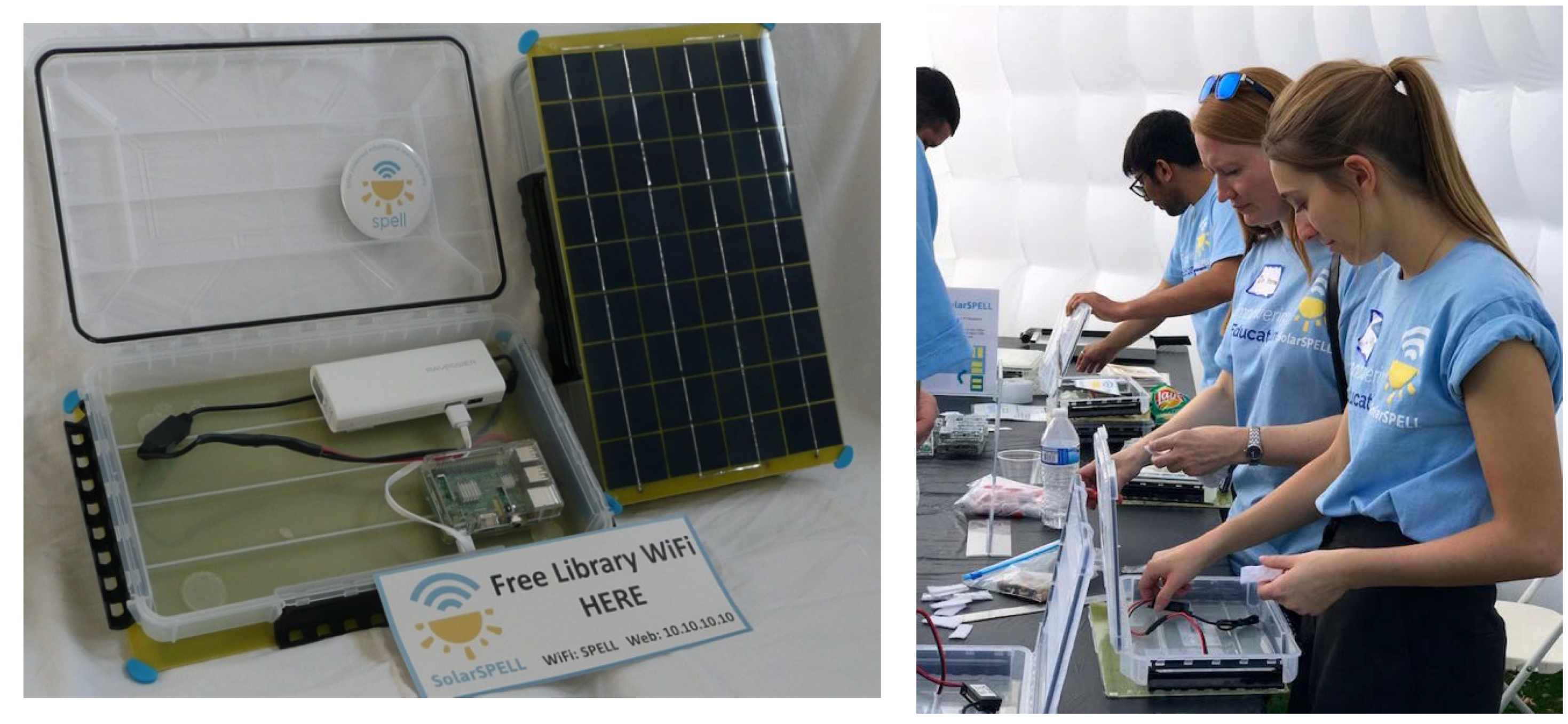
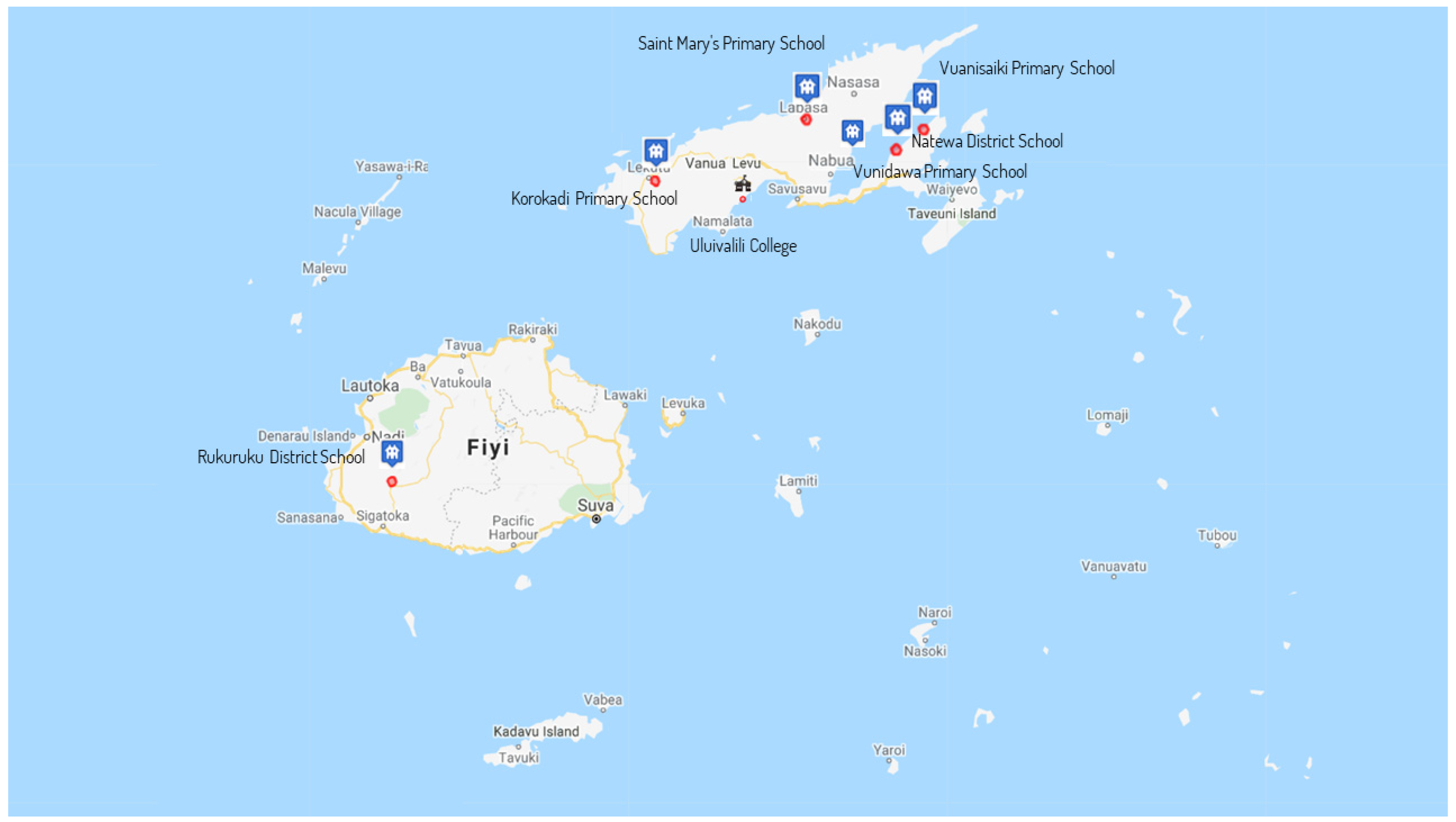
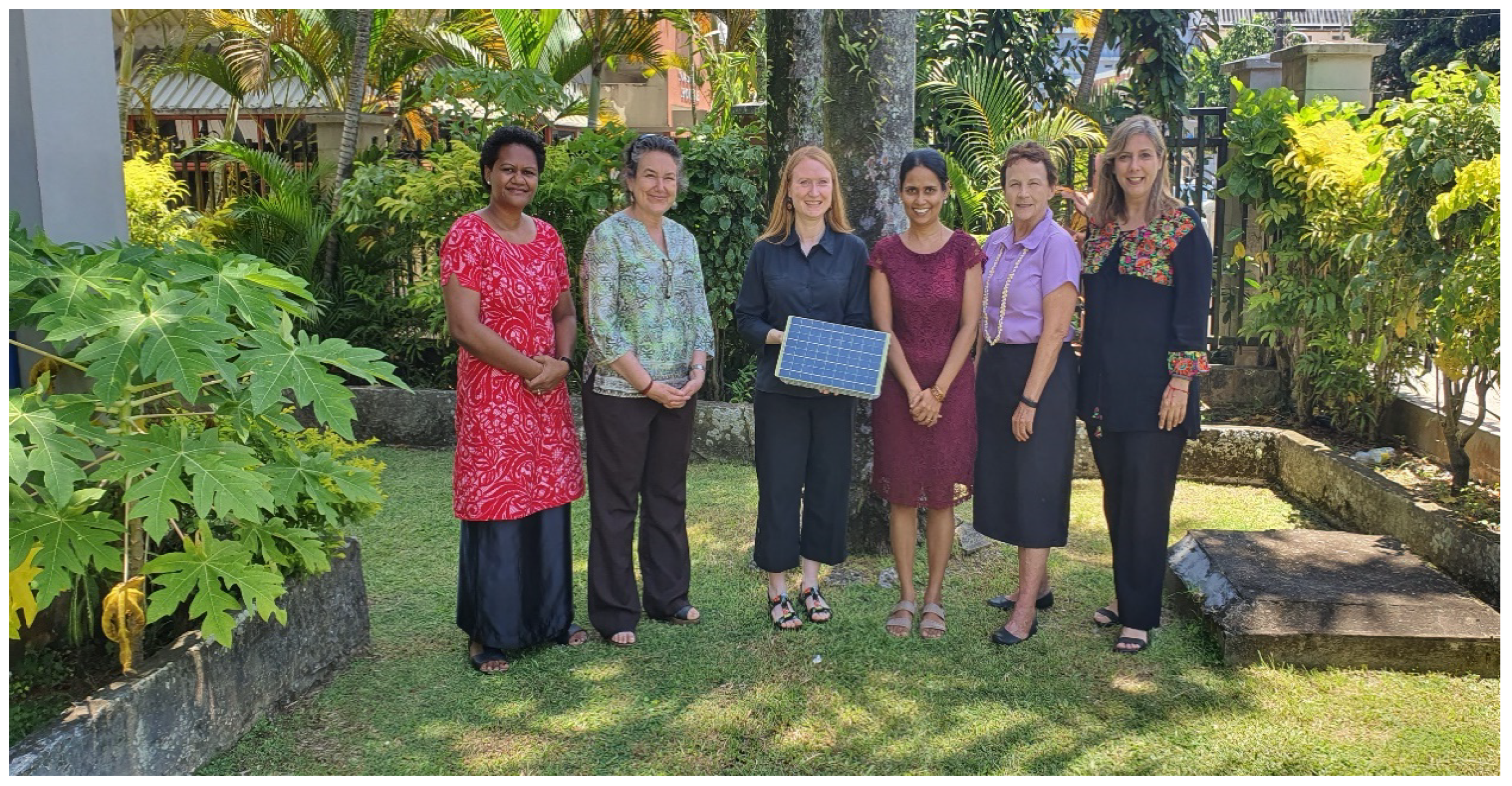
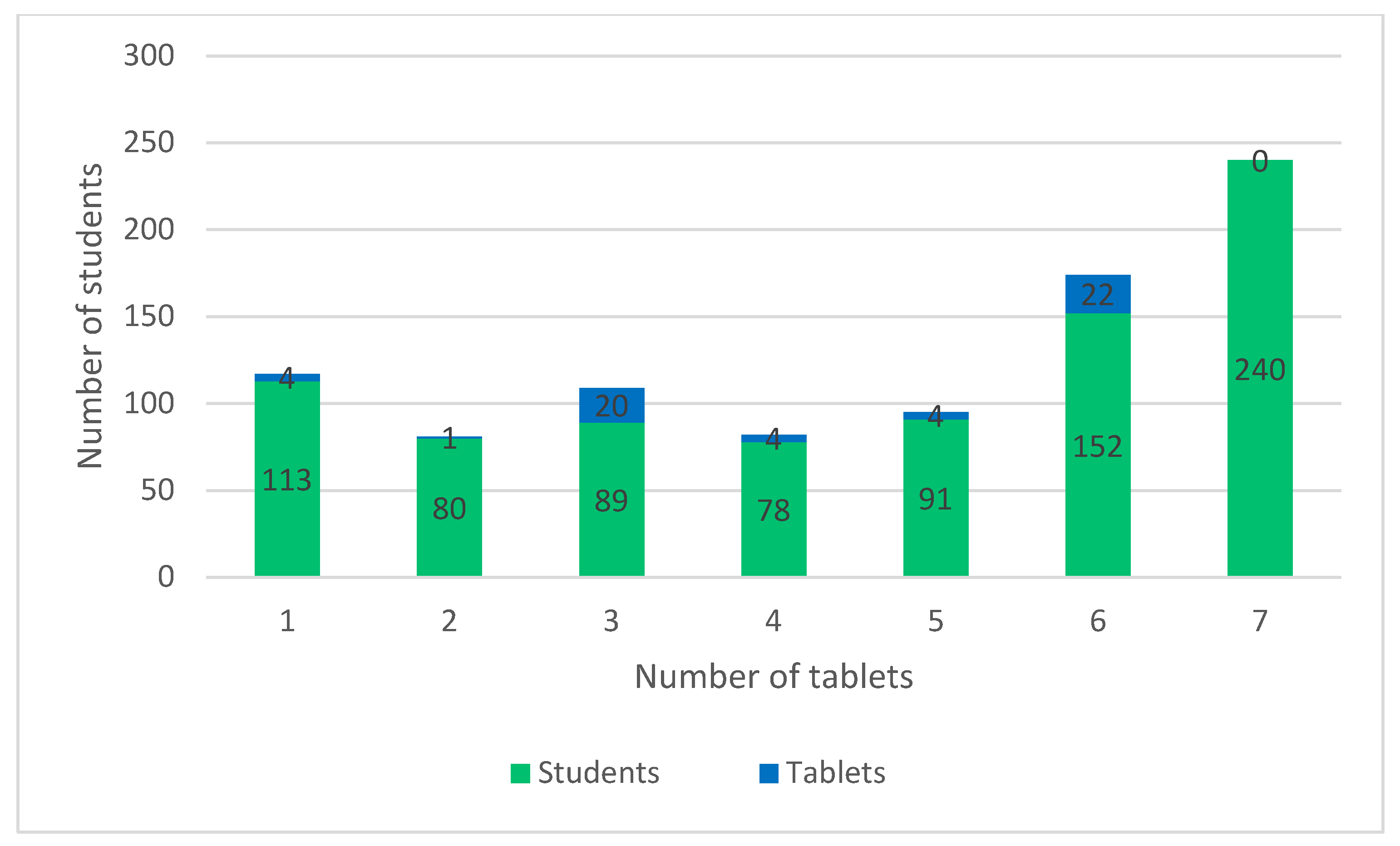
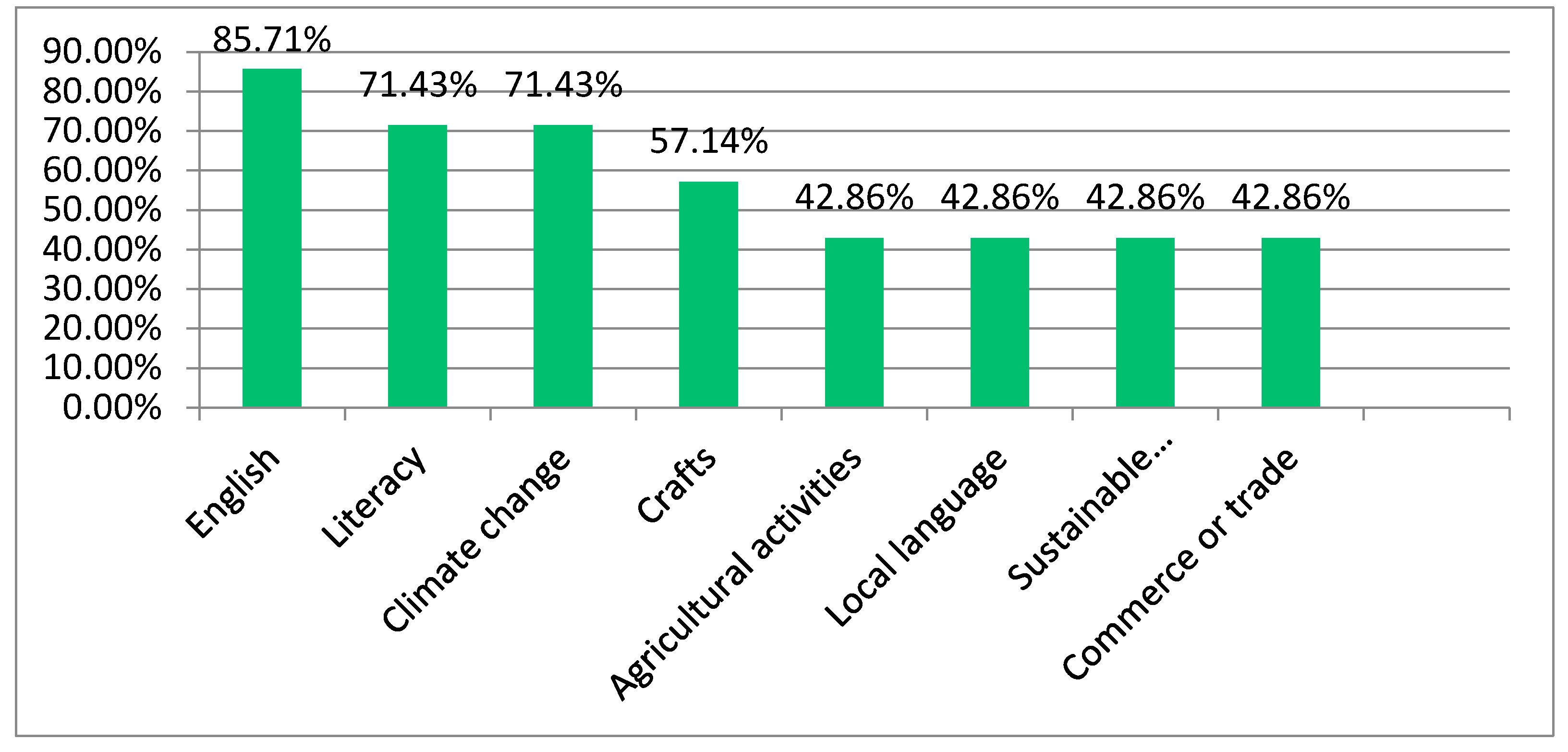
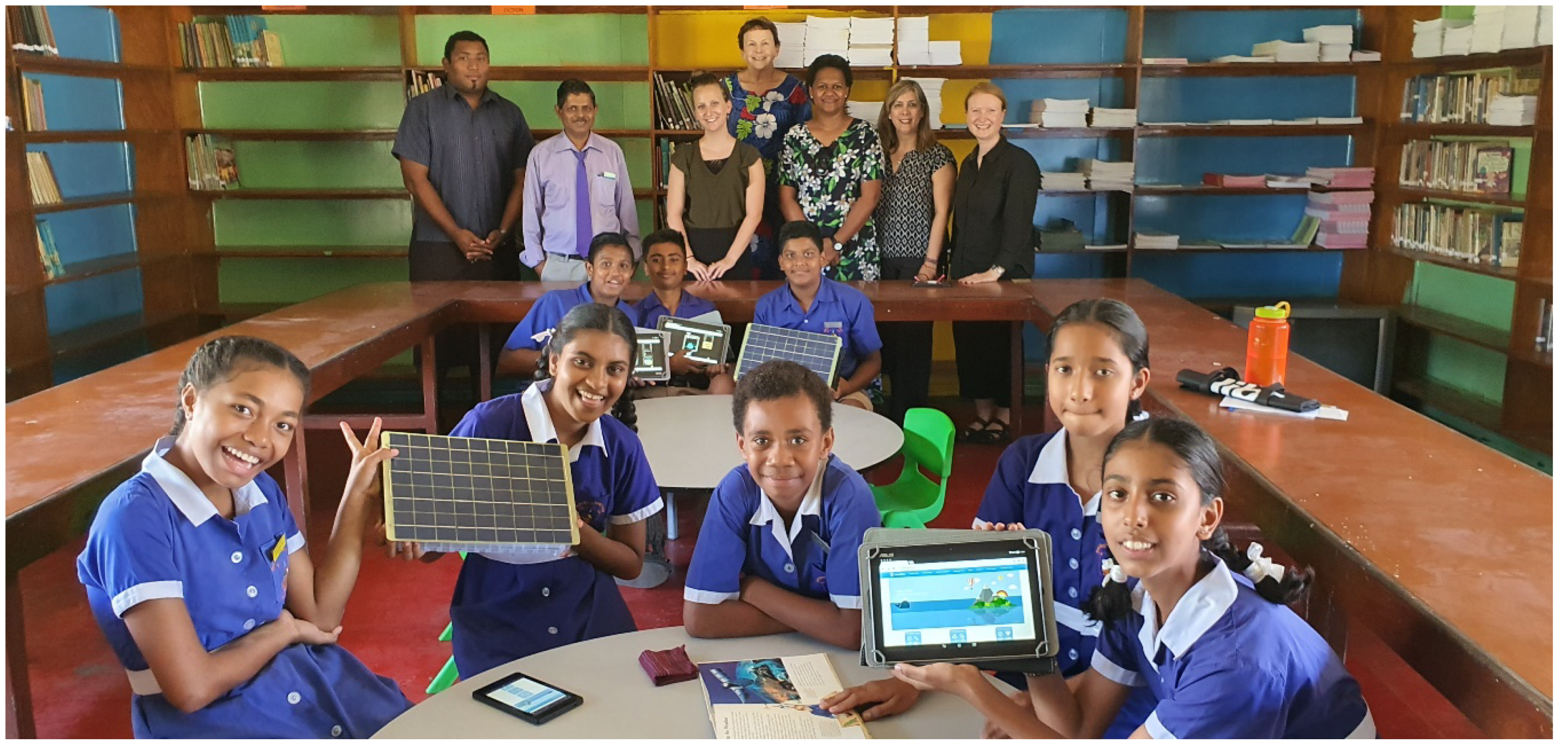

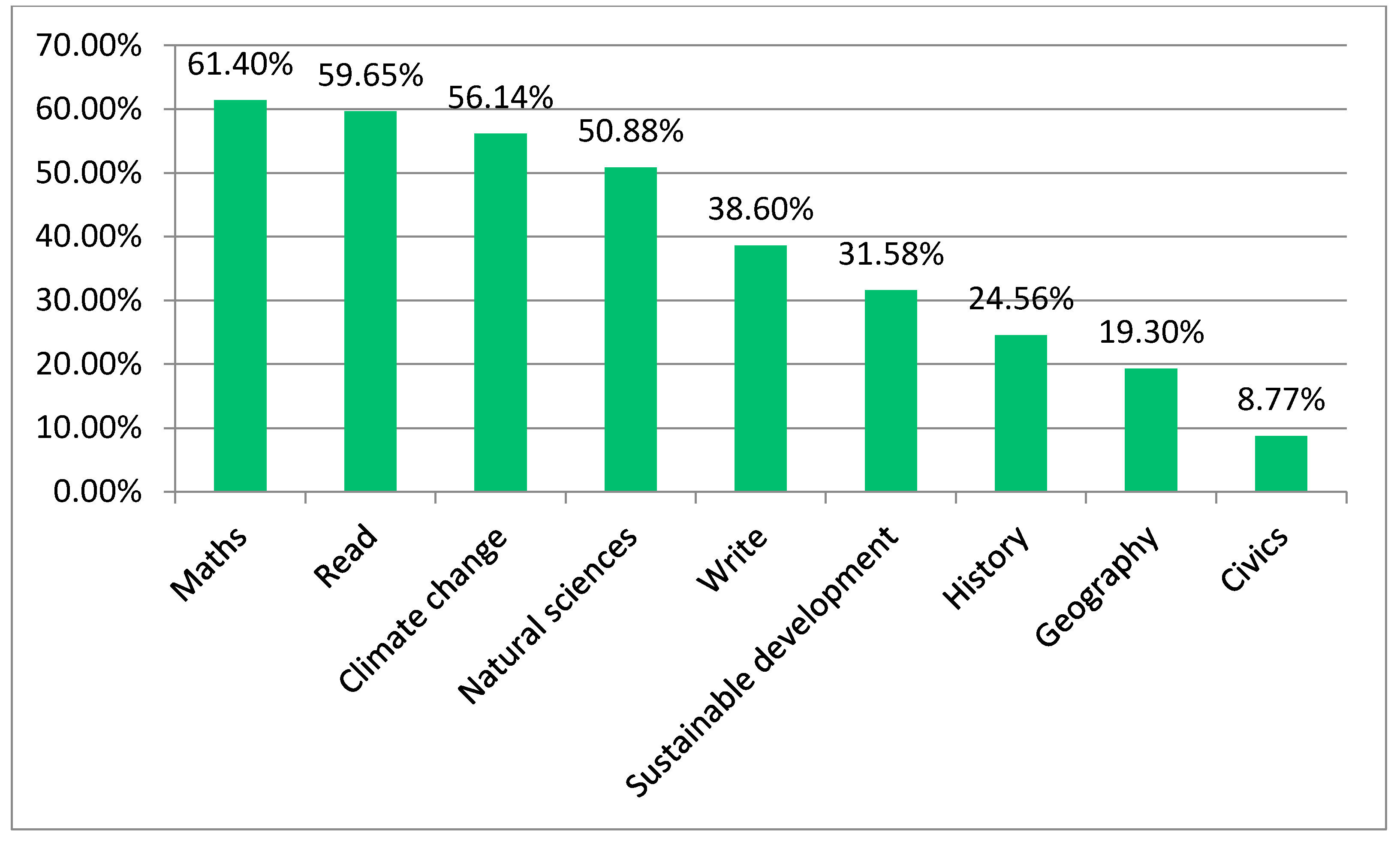
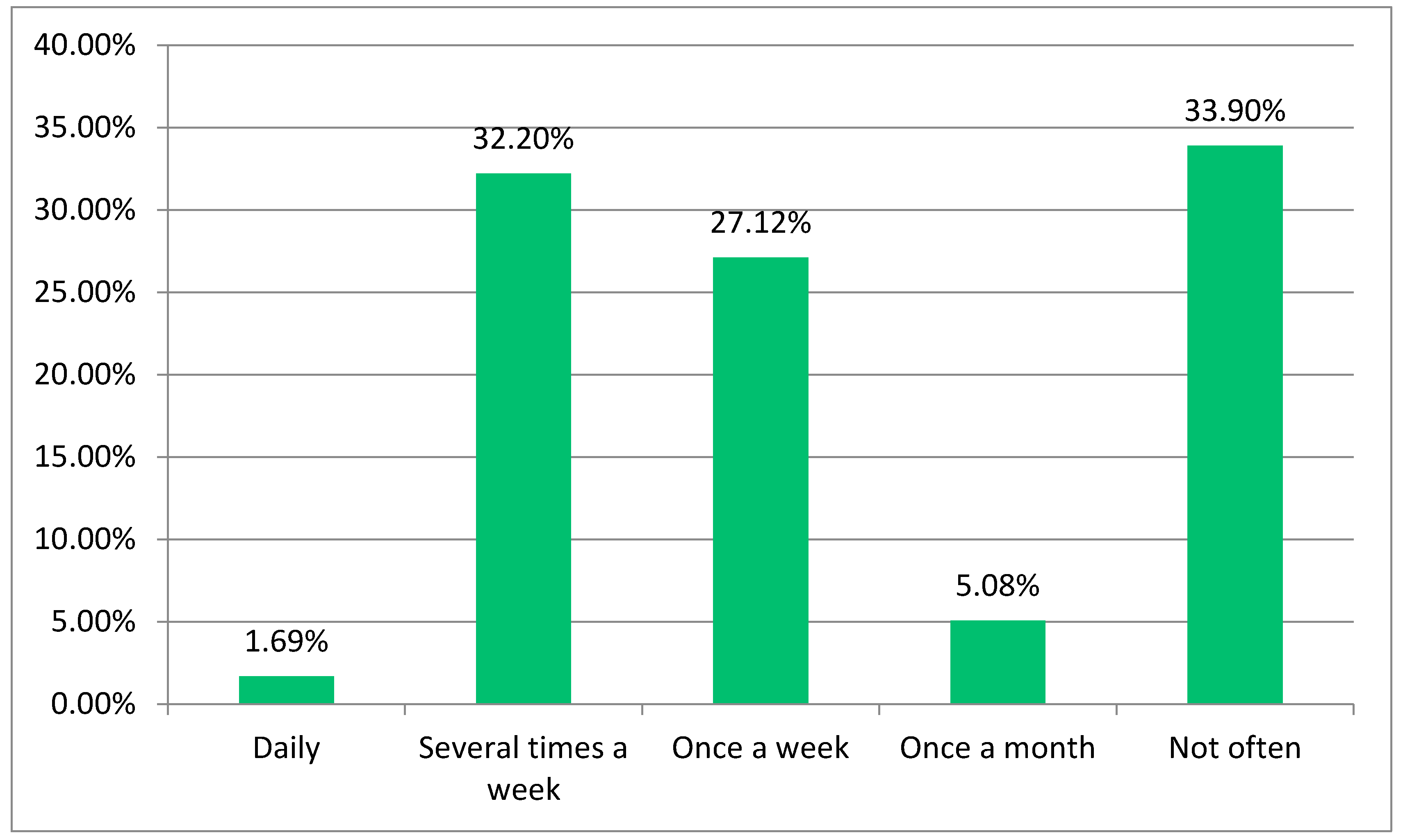
© 2020 by the authors. Licensee MDPI, Basel, Switzerland. This article is an open access article distributed under the terms and conditions of the Creative Commons Attribution (CC BY) license (http://creativecommons.org/licenses/by/4.0/).
Share and Cite
Hosman, L.; Gómez Zermeño, M.G.; Alemán de la Garza, L. SolarSPELL Assessment: Impact of a Solar-Powered Digital Library as a Teaching-Learning Resource on Climate Change. Sustainability 2020, 12, 6636. https://doi.org/10.3390/su12166636
Hosman L, Gómez Zermeño MG, Alemán de la Garza L. SolarSPELL Assessment: Impact of a Solar-Powered Digital Library as a Teaching-Learning Resource on Climate Change. Sustainability. 2020; 12(16):6636. https://doi.org/10.3390/su12166636
Chicago/Turabian StyleHosman, Laura, Marcela Georgina Gómez Zermeño, and Lorena Alemán de la Garza. 2020. "SolarSPELL Assessment: Impact of a Solar-Powered Digital Library as a Teaching-Learning Resource on Climate Change" Sustainability 12, no. 16: 6636. https://doi.org/10.3390/su12166636
APA StyleHosman, L., Gómez Zermeño, M. G., & Alemán de la Garza, L. (2020). SolarSPELL Assessment: Impact of a Solar-Powered Digital Library as a Teaching-Learning Resource on Climate Change. Sustainability, 12(16), 6636. https://doi.org/10.3390/su12166636





